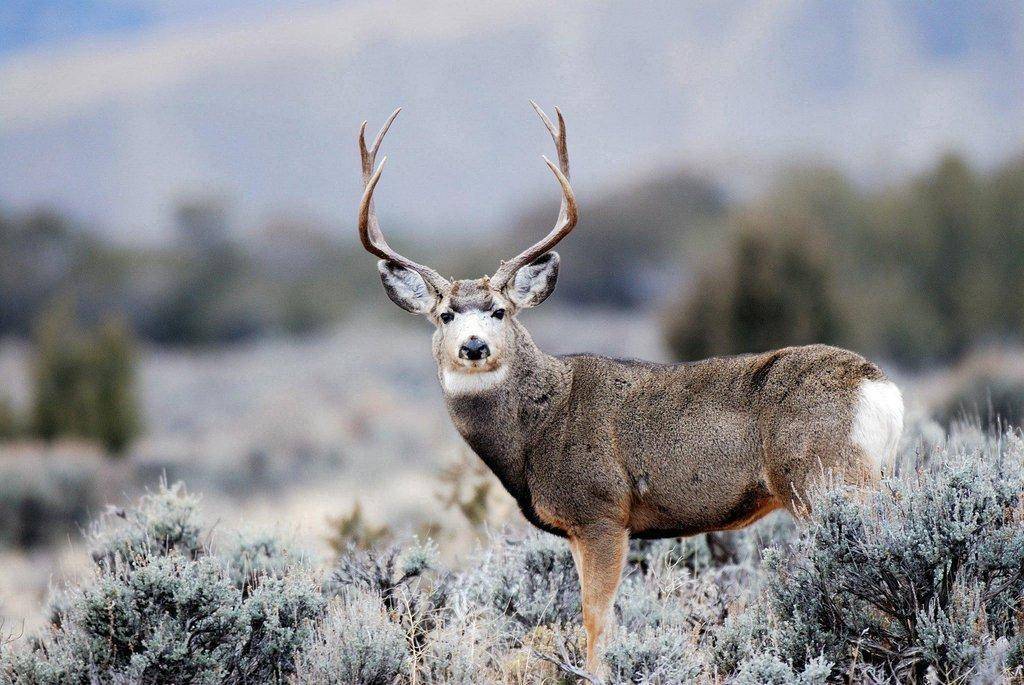Photo courtesy of Utah Division of Wildlife Resources
DWR News Release
SALT LAKE CITY — While winters with heavy snow can be hard on deer and other big game animals, Utah Division of Wildlife Resources biologists said that adult deer survival is currently at 92% statewide.
Biologists typically track deer survival rates from Dec. 1 to Nov. 30. And while they are currently only about a third of the way through their survival monitoring year, the majority of deer deaths occur during the winter. They are happy that the survival rate is at 92%, according to DWR big game projects coordinator Kent Hersey. The highest survival rates are in southern Utah, with average rates in central and southeastern Utah. Northern Utah has below-average survival rates, with the highest mortality rates in the Cache and Kamas/Chalk Creek areas.
“This is an above-average mortality year for the northern third of the state, but we have had worse,” Hersey said. “For the Cache County area, we have had much worse adult survival, but the Cache fawn mortality rates are well above average. For the area around Echo Reservoir, adult mortality appears quite high and this is concerning.”
While the majority of deer deaths occur during the winter when it’s hard for them to find food, winter-related deaths can still occur through April, Hersey said. However, as the temperatures increase, the snow melts and vegetation starts growing, the deaths start to decline.
Why doesn’t DWR feed deer during winters with a lot of snow?
While providing feed to deer and other big game animals may seem like a good solution for preventing deer deaths, it can actually cause more harm than good. Feeding with alfalfa hay or other feed can be damaging to the natural habitat, due to the large number of deer that congregate to one small area, according to DWR big game coordinator Covy Jones. It can also increase disease concerns, and suddenly introducing a higher-nutrient feed when the deer have adjusted to a low-nutrient feed during the winter can kill them.
“A changing diet can be hard on deer,” Jones said. “They are ruminants and have a bacteria in their gut that digests the feed. Because of that, it can take weeks for them to adjust from a diet of low-nutrient woody vegetation to high-nutrition forbs and grasses. When a diet change occurs too quickly, some deer can die in the process.”
Overall, feeding deer isn’t good for populations. When deer are being brought feed to their location during the winter, it causes them to congregate into a small area, and they end up kicking the fawns out of the herd, which increases their mortality rates.
“We balance what is best for the deer populations, what is best for the habitat and what is best for the other animals that depend on deer for food,” Jones said.
DWR does have a policy to provide feed for big game animals during extreme winters, but the specific criteria necessitating feeding wasn’t met this past winter.
What should I do if I see a dead deer in nature?
If you are hiking or camping and see a dead deer, leave it alone. If it is a buck deer, note that it is illegal to harvest the antlers if they are still attached to the deer — even when the animal is already dead.
If you see evidence that suggests the deer was illegally killed, get a GPS coordinate if possible and report it to the UTiP Hotline at 1-800-662-3337 as soon as you can. Try to avoid disturbing the carcass as evidence may be present that could lead to the identification of those responsible.
“Be a good witness. Leave the area undisturbed and contact the UTiP Hotline at your earliest opportunity,” said Lt. Wyatt Bubak with DWR law enforcement.

